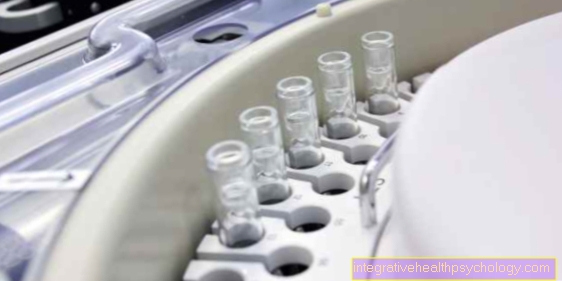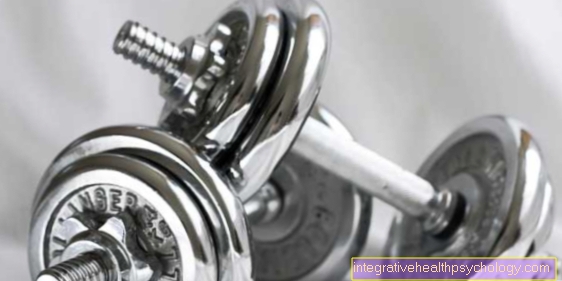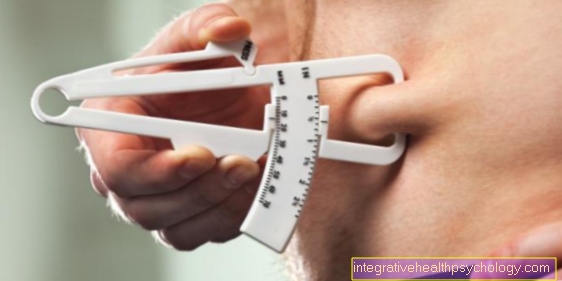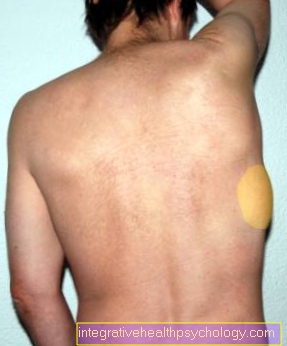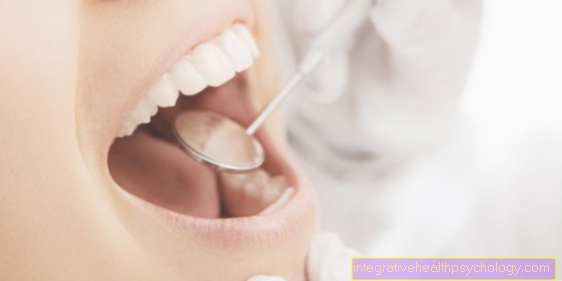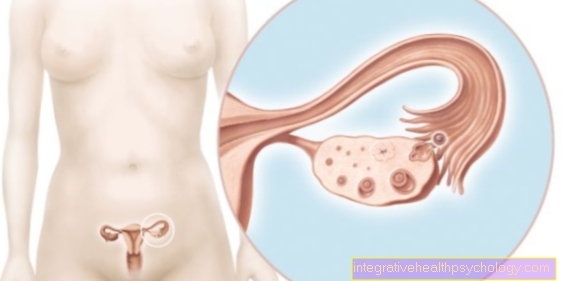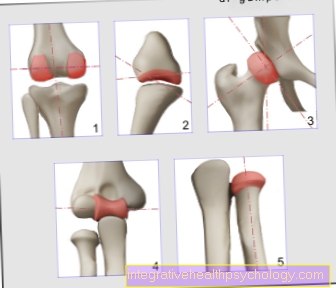Removal of a dental implant
introduction
A dental implant is a metal pin, usually made of titanium, which is inserted into the jawbone to replace a tooth root.
After a generous healing phase (up to 4 - 6 months), the tooth is reconstructed on this tooth root replacement, that is, a tooth crown, dental bridge or similar is placed.
Since these attachments are made of tissue-friendly materials, there is a risk that bacteria will settle there and plaque will develop. Plaque is a bio-film that consists mainly of food debris and waste products from bacterial metabolism.
The plaque can lead to the formation of deep gum pockets, through which further bacteria can migrate into the area around the dental implant.
As a result, dental implants cannot literally grow together with the jawbone and must be removed.
The bacterial colonization can also lead to inflammatory processes and / or the formation of abscesses.
These articles might also interest you: Inflammation on the dental implant, peri-implantitis

Illustration dental implant
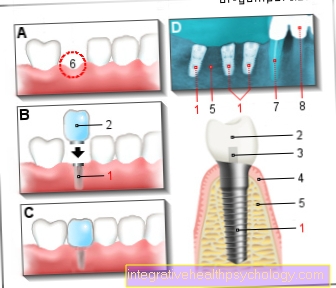
Dental implant
(= artificial tooth root)
- Titanium implant body
here rotationally symmetrical
(Screw implant) - Implant crown
(visible in the mouth) - Implant abutment
with retaining screw - Gums - Gingiva
- Alveolar bone (tooth bearing
Part of the jawbone) -
Pars alveolaris
or alveolar process - Tooth gap
- Tooth pulp in the tooth cavity -
Pulp dentis in the
Cavitas dentis - Tooth crown - Corona dentis
A - missing tooth
B - planting the implant in
Jawbone, supply of
Structure and crown
C - Missing tooth due
Replace single tooth implant
and supplied with a crown
D - orthopanthomogram (OPT)
with three dental implants im
Lower jaw right
You can find an overview of all Dr-Gumpert images at: medical illustrations
How painful is the removal of an implant?
Surgical interventions like this are of course performed under anesthesia or local anesthetic. However, pain can still occur if the narcotics do not work. The most common cause of local anesthetic failure is inflammation. The pH value in the focus of inflammation is too low for the syringes to work properly, as the surrounding environment is acidic due to cell excretions and the anesthetic agent cannot get to its place of action.
Find out more about anesthesia here: General anesthesia at the dentist
The reason for having to remove an implant at all is often an inflammation of the bone in the area of the implant body. In the case of acute inflammation, simple local anesthesia may not be sufficient. Depending on the size of the surgical procedure, a major operation with anesthesia must then be carried out.
After removal, pain can again occur as the soft tissues were eventually cut open and stabbed while sewing. A piece of bone is also removed from the jaw. The body will notice that too. It is therefore advisable to continue taking pain medication after the operation.
What are the costs of this procedure?
The costs vary depending on the complexity and duration of the operation. Loose implants, which are no longer anchored in the bone, for example due to chronic peri-implantitis (inflammation of the teeth holding apparatus, see article Parodontosis), can be removed like a tooth with forceps. A simple anesthetic is usually sufficient. The costs are lower with a small operation.
If the procedure is more complex, i.e. the implant has to be milled out of the bone, additional bones may arise, as more materials (sutures, medication, bone substitute material) and more time are required accordingly.
The costs for an implant removal can therefore range from € 20 to € 150.
Who bears the costs?
There is no billing item for the removal of an implant in the BEMA (assessment standard for dental services).
This means that the dentist cannot settle this through the health insurance. It is therefore billed via the GOZ (schedule of fees for dentists). These are private bills that the cash patient has to pay himself.
Private patients or patients with private supplementary insurance can submit these bills to their health insurer if necessary. If implants are included in the insurance package, there is a possibility that you will get something reimbursed.
What are the risks of removal?
Vascular injuries are relatively common, but can also be easily repaired.
One problem is that bones are lost when milling out. Thus, with a 4mm diameter implant, the loss can be up to 7 or 8 mm. If the implant is not milled but screwed out, a bone fragment can flake off.
In addition, nerves can be damaged, for example the large conduction nerve in the lower jaw.
Can I put a dental implant again after the removal?
Generally there is the possibility to place another implant. However, one cannot generalize this statement. In some patients, a new implant can be placed directly after an implant has been removed.
Otherwise the bone may have to be rebuilt first. Either through the body's own substances or through bone substitute material.
It is important that the area around the implant is free of bacteria so that inflammation does not occur again.
In the course of this, the dental implant loosens and removal becomes unavoidable.
Both the treating dentistand the patient himself can help to minimize these risks. On the part of the dentist, a particularly hygienic procedure is necessary during the operation, i.e. the actual insertion of the implant.
The choice of the ideal material also reduces the risk of Inflammation and abscesses.
The patient himself should pay special attention to extensive, careful oral hygiene after the implantation. It is advisable to use cautiously Floss and / or interdental brushes (Interdental brushes).
Furthermore, studies have shown that the consumption of tobacco products after the operation increases the risks mentioned above. For this reason, smokers are strongly advised to stay on for a few weeks after having a dental implant Smoke to renounce.
In addition, the patient should absolutely keep to the agreed follow-up appointments and be in close contact with the dental practice in the event of problems.






